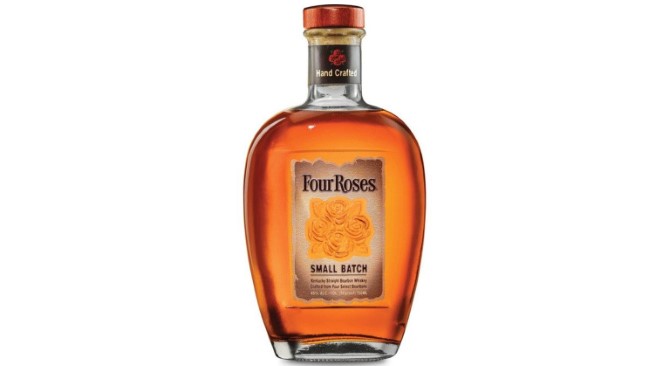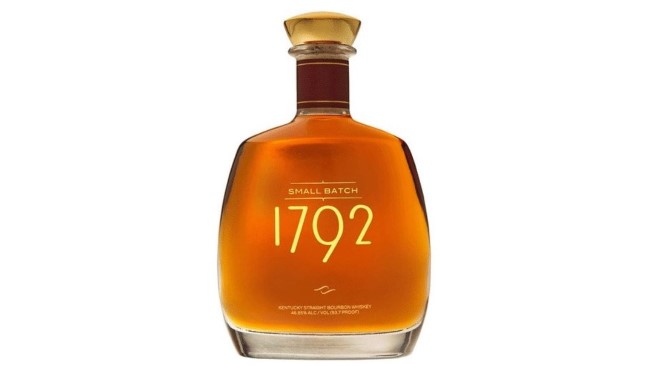What Are the Best Bourbons Under $30?
Photos via Heaven Hill, Brown-Forman, Jim Beam, Wild Turkey, Buffalo Trace, Four Roses, Maker's Mark, Barton 1792, Diageo, Drink Features whiskey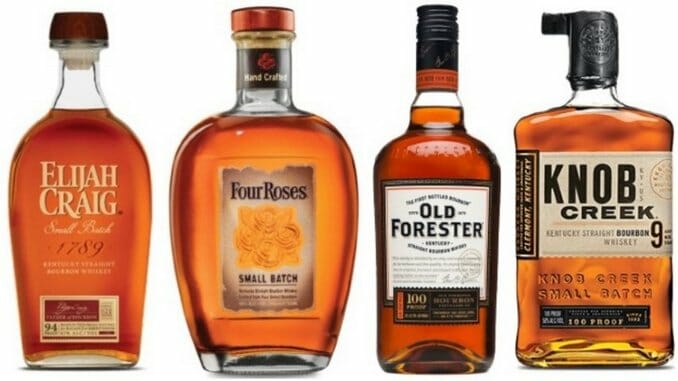
Cocktail Queries is a Paste series that examines and answers basic, common questions that drinkers may have about mixed drinks, cocktails and spirits. Check out every entry in the series to date.
We’ve already published some overarching pieces on the concept of “value” as it exists within different price tiers of the bourbon world, but this seems like a good moment to dig down a little deeper. To set a specific price cap, and really get into what the best bourbons available at that level might be. We’ll start at the lower end of the spectrum, and work our way up from there.
A few things to note:
— For the sake of accessibility, we’re keeping this to major, widely available brands whenever possible, rather than offerings from micro distilleries that may be available in only one city or state.
— You’re not going to see something like W.L. Weller Special Reserve on here, for the simple fact that although its list price may be around $25, retailers are routinely gouging all the way to $100 or beyond for it, which is a level both ridiculous and irresponsible for what is meant to be an easygoing, accessible bottom shelf brand. We’ve written about this price gouging problem in much greater detail, and will be keeping this piece to brands that are genuinely found at their MSRPs.
Why $30, as a starting level? Well, in the current bourbon landscape $30 feels like a major demarcation point between the top of the “entry level” mid-shelf bourbons and the more premiumized brands that have to make a more direct case for why they’re worth $40, $50 and beyond. In particular, there’s a lot of brands hovering right around the $30 mark that represent truly excellent value for your dollar. We’ll also dip into a few extreme value picks here that are available for less than $20, but my main goal is to target the $20-30 range in particular—a realm of respectable bourbons that are often great choices for those exploring whiskey for the first time. If you really want extreme value, then you can always revisit our blind tasting of 13 bourbons under $15.
So let’s go ahead and answer the question: What are the best bourbons for less than $30? I’ll arrange these in approximate order of price.
Very Old BartonDistillery: Barton 1792
ABV: 40-50% (80-100 proof)
Price: $15
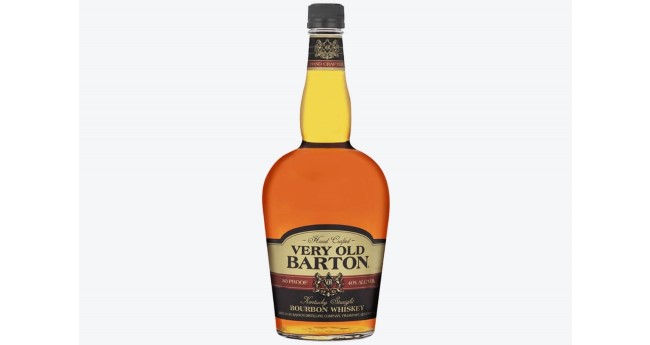
The winner of our bottom-shelf bourbon blind tasting wasn’t exactly a whiskey we were expecting, but that’s par for the course when it comes to Barton, which perpetually seems to be underestimated in the eyes of whiskey geeks. This distillery, despite being one of the old Kentucky stalwarts, has a way of flying under the radar despite the fact that they make some very good bourbon and routinely win awards. That’s just sort of become part of the distillery’s identity, so Very Old Barton is a perfect budget flagship, although it’s not the most widely available on this list.
Very Old Barton is available in different states/markets in a confusingly wide variety of proofs, which has included 80, 86, 90 and 100 proof versions, but they’re all the same liquid, aged on average 4-6 years, though it lacks an official age statement. All the versions are winners, although for the record it’s the 90 proof that won our hearts in our blind tasting. As we wrote at the time:
On the nose, this feels like a classical, decently aged bourbon: Plenty of caramel, vanilla, some oaky char and a good amount of baking spices (cinnamon, ginger, clove). On the palate it feels slick and moderately viscous, with plenty of peppery rye spice and a growing hint of black cherry that swells on repeated sips. Dare we say, this one actually tastes a bit older than it is, especially in terms of the oak and spice complexity that is present. It has a nice rye character without seeming like a rye whiskey, because it never loses its fullness of body or corny sweetness, all of which make it a joy to drink neat.
Old TubDistillery: Jim Beam
ABV: 50%
Price: $20

Old Tub was unveiled to the wider public by Beam last year and became an immediate favorite of whiskey geeks for the superb value it represents. Now, to simply get “value” from Beam bourbon products is nothing new—they have the economy of scale that allows them to consistently offer some of the best prices on the market on the bottom and mid-shelf in particular. But Old Tub caught the attention of passionate bourbon people because it represented Beam delivering on their wish list—a high-value bourbon at a sturdy proof point that was also unfiltered. Note, Beam already had been offering a 4-year-old, 100 proof bourbon in the form of Jim Beam Bonded, but Old Tub’s unfiltered nature was specifically designed to appeal to the whiskey geek who wants maximum flavor for the proof point. There, it delivers handily, being just about as flavorful a bottle as you’ll find for $20. As we wrote when sampling it:
On the palate, I’m getting cornbread, brown sugar, cinnamon candy, butterscotch and hints of sweetened peanut butter. “Nutty Bars” was one of my first thoughts, as the slight cocoa note combines with peanuts to evoke that childhood wafer confection. The ethanol, meanwhile, is integrated pretty nicely, and this is plenty easy to drink, seeming a bit under its 00 proof while still possessing a pleasantly full mouthfeel. “Pleasant” really is the word—if you like the Beam bourbon profile, you’ll like this. We’re not always fans of younger Beam whiskeys in particular, but this one does enough to earn a $20 investment and then some.
Wild Turkey 101Distillery: Wild Turkey
ABV: 50%
Price: $20

Old-school whiskey drinkers know that Wild Turkey has always been a destination for both value and quality. Modern bourbon geeks have sometimes ignored that value, thinking of the likes of Wild Turkey 101 as a “party” whiskey lacking in sophistication, but that doesn’t stop it from continuing to perform very well in blind taste-offs. The price has crept up a bit as a result, and it may be harder to find it for $20 or under now, but WT 101 is still out there for less than a Jackson if you have access to a competitively priced package store.
If you don’t, of course, there’s always the less frequently seen Wild Turkey 81, which is sometimes relegated to bar wells, but is just as fine a product as the better-known 101.
Wild Turkey packs classic Kentucky bourbon flavors of caramel corn, vanilla and honey, with earthy rye, char, hints of mint and a fairly dry finish—more lean and less desserty than some of the competition. This is bourbon for the bold; always has been and always will be. It even has a higher average age than most of the other bourbons in this category, and its humble appearance helps it continue to retain its value.
Old Forester 100 ProofDistillery: Old Forester (Brown-Forman)
ABV: 50% (100 proof)
Price: $25

Brown-Forman is another distillery with no shortage of good value plays, whether it’s on the budget side of things (Early Times Bottled-in-Bond) or the mid-shelf, but if you ask us, it’s the Old Forester line where the most value can usually be found. That brand’s flagship, 86 proof namesake bourbon is always a very good value at $15-20, but we’re more likely to shell out a few extra bucks for the upgrade to Old Forester 100 (until recently called Old Forester Signature) around $25. In exchange, you get a full hundred proof and a more explosive flavor profile that is more suitable to cocktails that need that extra oomph.
This particular offering is one that sometimes gets overlooked these days, given that Old Forester has been expanding its line with a lot more special releases (like the Whiskey Row series, and revamped Single Barrel offerings) in recent years. That’s probably what helps it remain an excellent value. What you get is a good expression of the Brown-Forman/Old Forester flavors you expect—cornbread and cinnamon, spicy rye and char, with hints of fruit that drinkers are equally likely to detect as cherry or banana on any given day. It’s a versatile cocktail bourbon with a friendly pricetag.
Buffalo Trace BourbonDistillery: Buffalo Trace
ABV: 45% (90 proof)
Price: $25
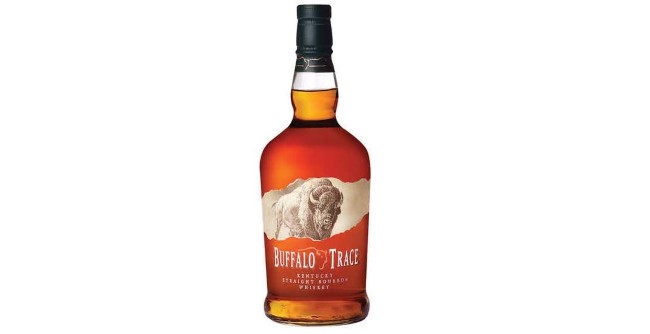
In a recent piece where I was writing about alternatives to heavily hyped bourbons, I offered the following for the particularly inflated interest in Buffalo Trace’s Blanton’s single barrel bourbon brand—you don’t need Blanton’s if you can find regular old Buffalo Trace. The mash bills are a little bit different between the two, but I still honestly think that the flagship Buffalo Trace is the superior brand when all is said and done—and likely older on average than Blanton’s as well, without the insane markups from price-gouging package stores.
Buffalo Trace mash bill #1 bourbons (like the flagship) tend to offer a beautiful middle ground in terms of flavor profile—the belt-high fastball of the bourbon world. Rich vanilla, caramel and cherry are often cited as signature tasting notes, and there’s a reason why BT has been a gateway for so many into the bourbon world, at least before its products all became so hard to find. The flagship Buffalo Trace bourbon is one of the few BT products that is still capable of being a good value, however, provided you find it around the MSRP of $25. Let’s hope you never see people trying to sell bottles of this for $100 or $200 like they do Blanton’s.
Bulleit BourbonDistillery: Bulleit (Diageo)
ABV: 45% (90 proof)
Price: $25
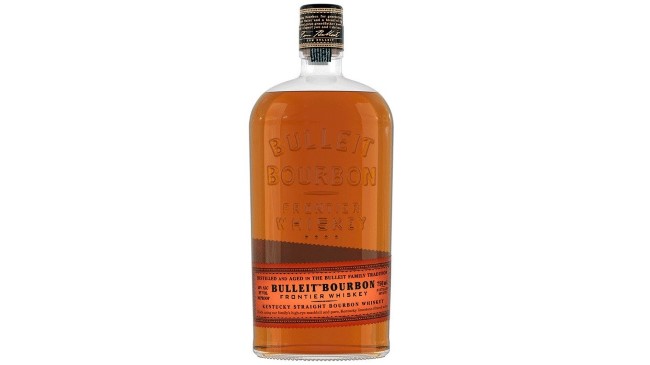
Bulleit has been toiling away for years now, working to distill and age its own product and eventually transition its bourbon production entirely in house after existing as a sourced brand for decades, but we’re still not quite there yet—they have plenty of whiskey aging, but haven’t released any of it yet as far as I can tell. That leaves the ever-present question of who produced the Bulleit product as it exists today—for a long time it was Four Roses, from whom Bulleit inherited its expected high-rye mashbill, but it’s no longer clear what the source of Bulleit is that is currently available on the shelf.
Not that it really matters a terrible amount—what’s on the shelf still tastes like a classic high-rye bourbon, and if it’s not still Four Roses juice then it’s a very good imitation. You get the combination of increased spice, peppery rye bread and baking spices along with the slightly sweeter and more fruit-driven profile (citrus and red fruit) that is common to 4R, making Bulleit an interesting combination of richness and rye-driven spice. There’s a reason why it’s been successfully pitched as “cocktail bourbon” for years, as the rye-heavy mash bill makes for a flavor profile that shines through nicely in your weeknight old fashioned or Manhattan. We look forward to one day tasting the high-rye bourbon that Bulleit has distilled for itself and noting if it ends up being significantly different, but until that day their flagship brand will likely remain a reliable option under $30.
Maker’s MarkDistillery: Maker’s Mark (Jim Beam)
ABV: 45% (90 proof)
Price: $25-30
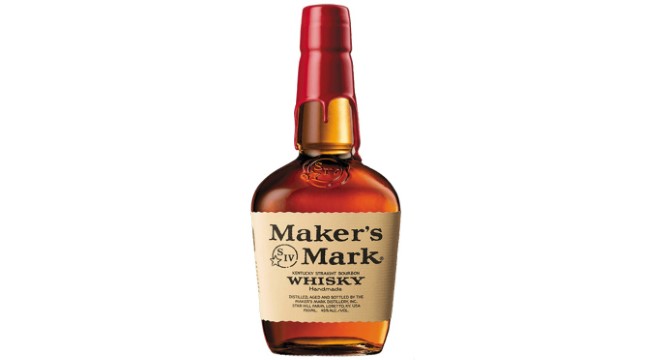
Few whiskeys have ever had such a wide-ranging role in serving as an introduction to an entire substyle as Maker’s likely has for wheated bourbon—that’s simply a bourbon mash bill in which the traditional rye has been replaced by some portion of wheat instead. “Wheaters” are classically regarded as being “softer” and sweeter than bourbons featuring rye, replacing some of the peppery spice with more delicate floral and fruity impressions. Of course, this is a classic case of “your mileage may vary,” and some may perceive the signature quality of wheated bourbons as being more of a doughy or malty flavor. Regardless, you can’t deny how popular they’ve become, at least partially due to the mystique that flows down from the hyped holy grail of wheated bourbons, Pappy Van Winkle. For all us regular folk, though, it’s Maker’s Mark (and Heaven Hill’s Larceny, its biggest competitor) that illustrates the style.
The flagship Maker’s Mark remains a lovely, approachable bourbon that is particularly appropriate for casual neat drinking, although it also handles quite well in an old fashioned, if you prefer them on the sweeter side. Caramel, cinnamon, citrus and vanilla cream are classic flavor notes here, along with more of a bready toastiness, but it’s pretty close to the middle of the bullseye that many bourbon drinkers picture in their mind when they think of brown spirits. Maker’s Mark usually seems particularly mild in terms of ethanol presence for its 90 proof, making it an especially attractive option to drinkers exploring bourbon for the first time. Suffice to say, this is a brand that has converted many, and it will convert many more.
Old Grand Dad 114Distillery: Jim Beam
ABV: 57% (114 proof)
Price: $25-30

Jim Beam, monolith that it is, has no shortage of extreme budget bourbons, but we’ll be frank when we say that we’re not always fans of the Beam flavor profile for really young or low-strength whiskey, as is found in brands such as Old Crow or the standard Old Grand Dad. OGD 114, on the other hand, is one of the most extreme values in the entire bourbon market, once you factor in the proof and a respectable amount of aging, rumored to be 5-6 years. It’s very, very hard to beat this from a “bang for your buck” perspective, and it’s old enough and strong enough that the Beam flavor profile is rounding into form, yielding a flavor bomb that can often be yours for as little as $25. Try finding another moderately aged bourbon close to cask strength for $25—it’s not going to happen.
The Old Grand Dad lineup is made with Beam’s high-rye (27% rye) mash bill, which yields a spicier and slightly wilder whiskey than the juice that goes into the standard white label, with pronounced notes of citrus, pepper and slight leather, along with the corny sweetness and roasted peanuts you expect from younger Beam bourbons. This is an excellent way for drinkers to make a first foray into overproof bourbon in general, to perhaps dip a toe into the more bombastic side of the spectrum before exploring more barrel proof whiskeys. It’s not the only Beam bourbon we’ll be talking about on the mid-shelf, either.
Elijah Craig Small BatchDistillery: Heaven Hill
ABV: 47% (94 proof)
Price: $25-30
This might very well be the bourbon that truly hooked me on drinking neat whiskey. There’s a lot of options from Heaven Hill that you can discuss in a list of the “best bourbons under $30,” and there is surely a legion of fans out there who would go to bat for Evan Williams Bottled in Bond (white label) in particular, but when push comes to shove, I will always come back to Elijah Craig Small Batch. The Evan Williams might be a bit stronger or bolder, but ECSB possesses a greater degree of composure and elegance that the younger, brasher Evan Williams can’t ever match. In fact, there are few bourbons available for less than $30 that are as “complete” as ECSB, checking all the various boxes one wants in a bourbon.
Elijah Craig Small Batch is the flagship of the Elijah Craig line, and within the Heaven Hill lineup the “EC” label implies extra aging and a more elegant (but approachable) presentation. There’s no age statement, but it’s a blend of bourbons up to 12 years old, presented at a characterful proof point, and generally packed with flavor. Personally, I find the sweetness of ECSB to be a major selling point, as it tempers light nuttiness and notes of peanut brittle with sweet vanilla, loads of citrus, subtle oak and spice. It’s another of the bourbons I regularly turn to if someone asks me what whiskey they should taste neat for the first time, as it effectively presents like a crash course in the most common and enduringly popular bourbon flavors. Also of note: ECSB is one of the brands you’ll most often find in the form of “store pick” single barrels, which allows the consumer to try numerous unique versions of the classic.
Knob Creek 9 YearDistillery: Jim Beam
ABV: 50% (100 proof)
Price: $30
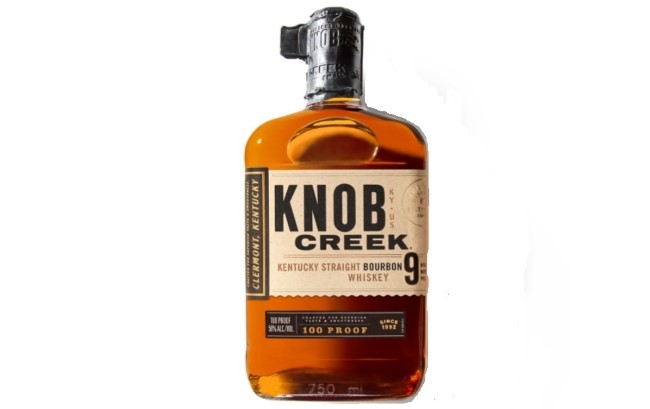
The price on the flagship version of Knob Creek has been steadily inching up ever since the 9-year age statement returned, to the point where it sometimes now goes past $30, but I really can’t blame Beam for pushing it forward a bit—this bottle, and this brand in general, have long been one of the best pure values on the bourbon mid-shelf, and many other distilleries would charge far more for a 9-year-old, 100 proof product. Even better is the relative complexity that Knob Creek 9 brings to this price range—it is a bourbon that evolves nicely in the glass even as you sip it over a period of time, beginning with corny sweetness and gradually transitioning to a slightly more savory profile. As we wrote when last revisiting it:
On the nose, the newly age-stated Knob Creek 9 Year is classic Kentucky bourbon, with notes of caramel corn, roasted peanuts, spicy cinnamon and moderate oakiness. This is very much middle of the bullseye, and I’m thinking this is exactly what they were going for—a bourbon benchmark. It fills that role admirably. On the palate, this is moderately sweet, with flavors of nutty toffee and caramel sauce, and lots of cinnamon spice. There’s corny sweetness and moderate oak presence, along with a blooming red fruitiness that becomes a pretty strong “cherry compote” note on repeat sips. Over time, more of a tobacco earthiness also emerges. Alcohol is quite nicely integrated in terms of the heat level, leaving it to drink easily neat for the proof. All around, a quintessential Kentucky bourbon.
Four Roses Small BatchDistillery: Four Roses
ABV: 45% (90 proof)
Price: $30
There’s nothing at all wrong with the flagship Four Roses bourbon, but in my eyes Four Roses Small Batch has always represented a substantial upgrade, and it remains one of my favorite whiskeys in the Four Roses family—extremely approachable, lightly decadent and easy to enjoy, especially for neat drinking. As with all Four Roses releases, the thing to understand here is that this is a blend created from the brand’s 10 recipes—in particular, Small Batch includes OBSK, OESK, OBSO and OESO. The use of the “K” and “O” yeast strains is of particular importance, as the “slight spice” of K and “rich fruit” of O give this bourbon its signature richness in comparison with the standard Four Roses or the 100-proof Four Roses Single Barrel. Compared with either of those others, Four Roses Small Batch shows significantly more influence from the lower rye (but still 20%) “E” mashbill as well. The result is a relatively less spicy, more fruit-driven version of Four Roses that I personally find irresistable.
Four Roses Small Batch averages between 6-7 years of aging and features some lovely impressions of citrus, stone fruit and red fruit on top of no shortage of rye spice, oak, mint and light caramel. As with all Four Roses, the rye is definitely there, but this is a bourbon that manages to combine rye spiciness with considerable sweetness as well—something that some bourbon drinkers may not have experienced before. Four Roses Small Batch also drinks very easily indeed, to the point that some may find it to be lacking assertiveness, but this simply makes it an effortless sipper for neat drinking in particular. I find that the flavor profile of this brand can be a “love it or hate it” scenario for many drinkers, but the combination of fruit, sweetness and trailing spice/mint has always made it one I’m excited to revisit.
1792 Small BatchDistillery: Barton 1792
ABV: 46.85% (93.7 proof)
Price: $30
Barton’s 1792 brand has seen a whole hell of a lot of line extensions in the last few years, from a wheated bourbon (Sweet Wheat) to several that blur together (1792 Single Barrel, 1792 High Rye, 1792 Bottled in Bond, etc) and are a bit hard to distinguish. The foundation, however, remains 1792 Small Batch, which can also be thought of as the big brother of the Very Old Barton from the beginning of this very list. It’s essentially that bourbon with some more age and nuance on it, which isn’t a bad thing at all.
Barton’s house style tends to provide a pretty good balance between a good level of spice, fruit and caramelized sugar impressions, and all are present in 1792 Small Batch. On the fruitier end, cherry, apple and citrus are commonly cited, but the higher than usual level of rye in the mash bill typically makes itself felt with spicy intensity as well. 1792 likewise can have a tendency to feel a bit bigger and bolder in terms of assertiveness than its proof point would suggest, so this is likely a whiskey for those who want a bolder experience rather than a more easygoing one. Each of the other 1792 variants riffs on this basic outline, although most will fall above the $30 barrier we’ve set. All in all, 1792 Small Batch holds up well in direct comparison with all its other mid-shelf small batch brethren.
Jim Vorel is a Paste staff writer and resident liquor geek. You can follow him on Twitter for more drink writing.

